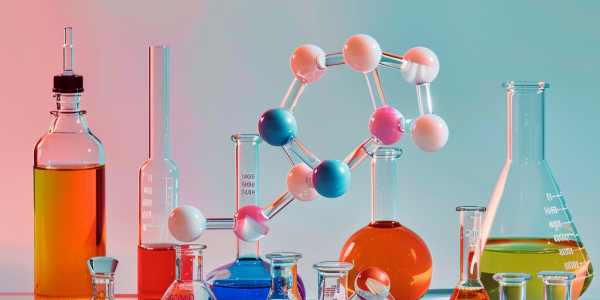Engineered Proteins Enable Rapid Detection of Toxins for First Responders
Biochemists at the University of Wisconsin-Madison have developed innovative proteins that can detect harmful chemicals and toxins in minutes, enhancing safety for soldiers and first responders. This groundbreaking technology, known as Sensor-seq, allows for rapid identification of substances like narcotics and opioids, revolutionizing emergency response and public safety.
Breakthrough Study Reveals Ultrafast Dissociation of Heavy Molecules
A groundbreaking study at BESSY II reveals the ultrafast dissociation of bromochloromethane molecules under X-ray light, showcasing the ‘molecular catapult effect.’ This research, published in The Journal of Physical Chemistry Letters, enhances our understanding of molecular dynamics and has potential applications in materials science and chemistry.
Navigating Privacy and Scientific Breakthroughs in Nanotechnology
Explore the critical intersection of privacy and nanotechnology advancements in our digital age. Understand the implications of cookie consent on personal data processing and discover groundbreaking research on manipulating single-molecule reactions, paving the way for innovations in pharmaceuticals and materials science.
Breakthrough Study Reveals ‘Latent Pores’ in Macrocyclic Molecular Crystals for Enhanced Separation Techniques
A groundbreaking study from Hiroshima University reveals the potential of ‘latent pores’ in macrocyclic molecular crystals for selective molecule trapping. This innovation could revolutionize separation techniques in industries like pharmaceuticals, environmental science, and recycling, leading to more efficient and sustainable practices.
Breakthrough in Organic Chemistry: New Strategies for Synthesizing Anti-Bredt Olefins
Researchers at the University of California have developed groundbreaking strategies to synthesize anti-Bredt olefins, overcoming Bredt’s rule limitations. This innovation opens new pathways for complex molecular structures, crucial for drug development. Neil Garg’s team successfully created enantiomerically enriched anti-Bredt olefins, paving the way for novel applications in pharmaceuticals and organic synthesis.
Breakthrough Discovery of Complex Carbon Molecules in Interstellar Cloud Sheds Light on Origins of Life
A groundbreaking discovery by MIT scientists reveals complex carbon molecules, specifically pyrene, in a distant interstellar cloud. This finding enhances our understanding of the origins of life and suggests that these organic compounds could have contributed to prebiotic chemistry on Earth. The detection of pyrene challenges previous notions about the survival of complex molecules in harsh cosmic environments, opening new avenues for research into the building blocks of life in the universe.
Breakthrough Study Reveals Molecular Mechanisms of Air Pollution Formation
Recent research published in Nature Communications reveals groundbreaking insights into air pollution formation, focusing on the molecular mechanisms at the liquid-vapor interface. This study uncovers the complex acid-base equilibria that influence air quality and climate change, highlighting the unique behavior of pollutants like sulfur dioxide. Understanding these chemical dynamics is vital for developing accurate models and effective strategies to combat air pollution and its impact on global climate patterns.
KAIST Researchers Unveil Novel Light-Driven Method for Atom Swapping in Aromatic Rings
Researchers at KAIST have unveiled a groundbreaking light-driven photocatalytic reaction that enables the replacement of oxygen atoms with nitrogen in five-membered aromatic rings. This innovative approach, published in Science, marks a significant advancement in atom-swapping reactions, with profound implications for medicinal chemistry and drug development.
Aarhus University Researchers Develop LaKe Molecule to Mimic Exercise Benefits
Aarhus University researchers have unveiled LaKe, a revolutionary molecule that mimics the metabolic effects of exercise and fasting. This innovative compound could transform health and nutrition, offering significant benefits for those unable to maintain regular exercise routines. Current trials suggest LaKe may promote well-being and address neurological conditions, potentially becoming a key player in combating metabolic syndrome. Discover how LaKe could change the future of health supplements and improve quality of life.
Breakthrough Study Reveals ‘Dancing Molecules’ for Cartilage Repair
A groundbreaking study from Northwestern University reveals a novel injectable therapy using innovative ‘dancing molecules’ to repair damaged cartilage cells. This research, published in the Journal of the American Chemical Society, showcases how synthetic nanofibers can stimulate cellular receptors, offering significant advancements in regenerative medicine and potential treatments for conditions like osteoarthritis.










